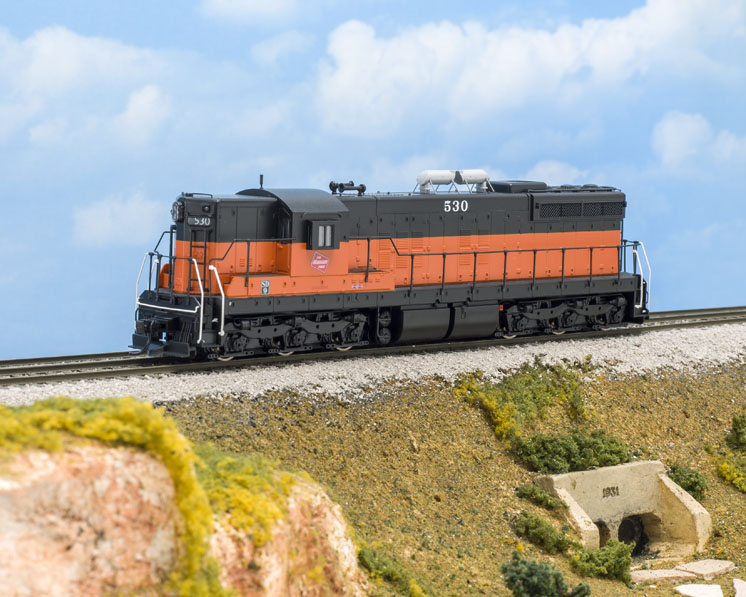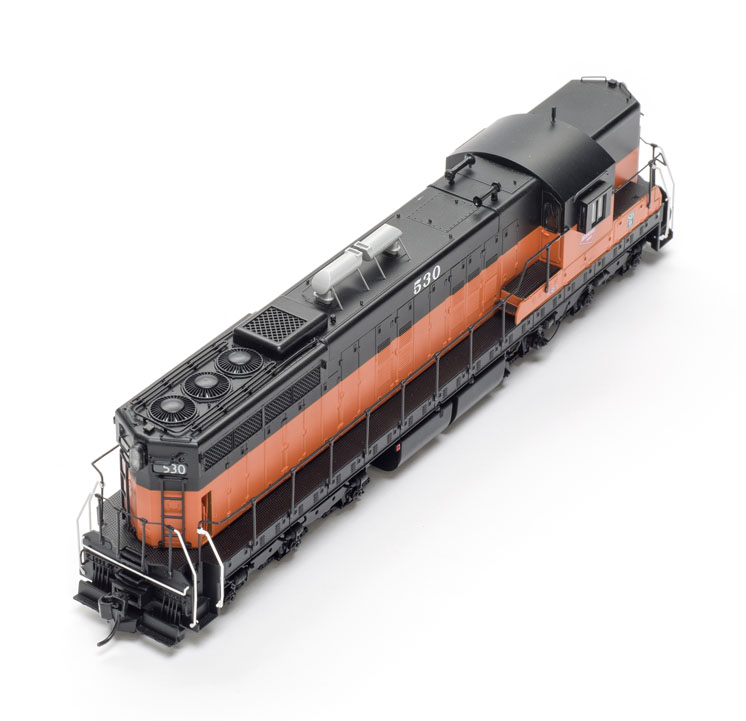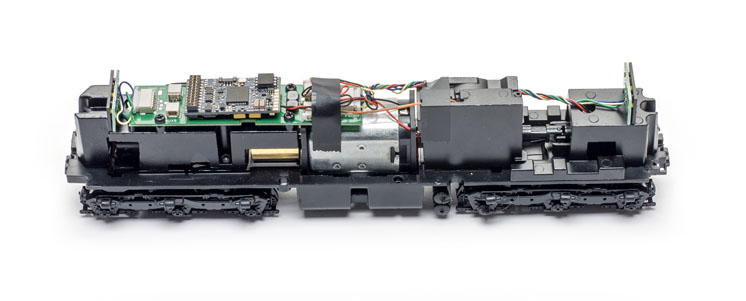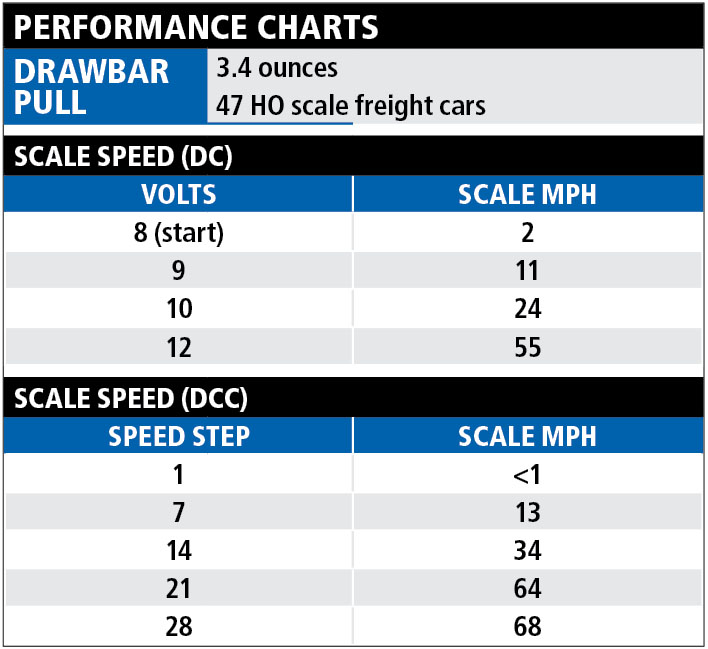The prototype. General Motors’ Electro-Motive Division (EMD) produced 471 SD9 locomotives for North American railroads. The SD9 featured a 16-cylinder 567C diesel engine and six-axle Flexicoil trucks. Rated at 1,750 hp, the SD9 was a more powerful version of its 1,500 hp predecessor, the SD7.
The locomotive’s C-C configuration meant three traction motors on each truck. This gave the SD9 75,000 pounds of continuous tractive effort.
Although most Class 1 railroads stopped using SD9s by the 1980s, some still labor on today.
Decorated and detailed for Milwaukee Road no. 530, our review sample represents its prototype as it appeared in the 1960s and early 1970s. Prototype-specific details include all-weather cab windows, dual sealed-beam headlights, spark arrestors over the exhaust stacks, and winterization hatch.
The paint is smoothly applied with sharp separation between the black and orange stripes. The placement of the road numbers, heralds, and builder’s plates match prototype photos.
The main printed-circuit (PC) board is attached to the rear weight. On our DCC-equipped sample, the decoder is plugged into a 21-pin socket on the main PC board. There are light boards at each end with separate surface-mount light-emitting diodes (LEDs) to illuminate the headlights and number boxes. The well-enclosed vertically mounted speaker is located just in front of the motor.
Pulling power. The model’s all-wheel drive mechanism and nearly 1 pound weight helped it achieve a drawbar pull equivalent to 47 free-rolling HO scale freight cars on straight and level track. During a hill climb test, the SD9 pulled an 11 car train up a 3 percent grade without slipping or stalling.
The gearboxes also feature 14:1 helical gears that have teeth cut on an angle rather than straight across. This provides exceptionally smooth performance, espe-cially at low speed. Even at a crawl there was no discernible jerking or stalling.
I also appreciated that the Proto-Max couplers are metal and sturdy enough to handle repeated switching duty during an operating session. The couplers reliably couple and uncouple to other Kadee-compatible couplers.
DCC operation. As shown in the performance charts above, the model started moving steadily at less than 1 scale mph in speed step 1 and accelerated to a top speed of 68 scale mph, close to one of the gearings available on the prototype.
The decoder accurately captures the prototype’s sounds, including the rumble of the EMD 567C diesel engine and the distinctive bleat of the dual single-chime air horns.
Virtually every aspect of the ESU LokSound decoder can be adjusted using configuration variables (CVs). An ESU LokProgrammer (sold separately) makes this task much easier. For example, I remapped the headlights for prototypical non-directional control. It’s also easy to adjust volume levels, momentum, and other features. Even if you don’t purchase the computer interface, the free LokProgrammer software is an invaluable programming aid for LokSound decoders. You can download it, as well as a user manual, at loksound.com.
The ESU decoder provides some realistic momentum in DC mode, making for realistic stops and starts. I especially enjoyed how the engine rpm increases before the locomotive starts moving, just like the prototype.
In DC mode, sound and light effects are limited to the directional headlight, engine rpm, and the compressor and other random sounds. As on the prototype, the number boxes are illuminated on both ends regardless of the locomotive’s direction. Squealing brakes sounded when I quickly reduced
the throttle.
Prototypical sounds and detailing make the WalthersProto SD9 a standout model of this first-generation diesel workhorse.
Price: $299.98 (DCC sound), $199.98 (DC, no sound)
Manufacturer
Wm. K. Walthers Inc.
5601 W. Florist Ave.
Milwaukee, WI 53218
walthers.com
Era: 1954 to 1980s (as detailed)
Road names (multiple road numbers): Milwaukee Road; Chicago, Burlington & Quincy; Elgin, Joliet & Eastern; Nickel Plate Road; Southern Pacific (“black widow” and gray/scarlet schemes)
Features
- All-wheel drive and electrical pickup
- Die-cast metal frame
- ESU LokSound Select dual-mode decoder
- Five-pole, skew-wound motor with brass flywheel
- Light-emitting diode headlights
- Proto-Max metal knuckle couplers at correct height
- Weight: 15.3 ounces

















